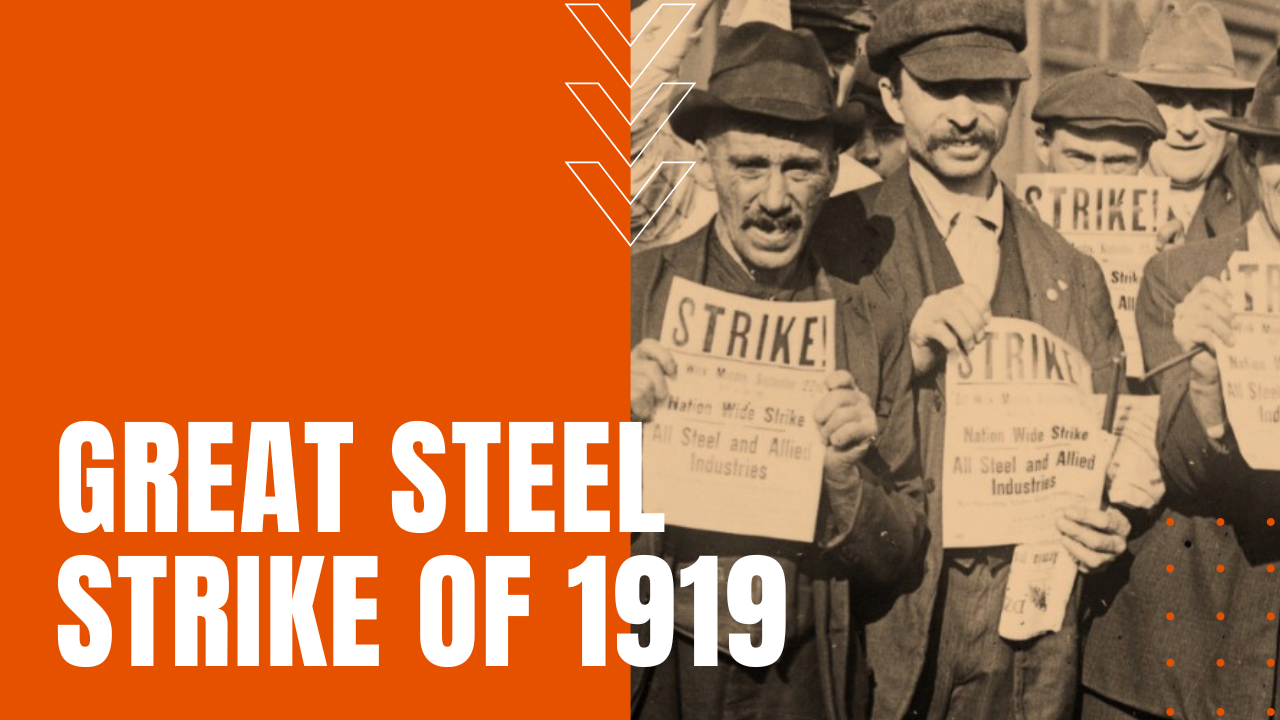Great Steel Strike of 1919

In the lead-up to America’s entry into the First World War, a sense of nationalism stoked tensions within the immigrant diaspora of most industrialized regions of the United States, and after the Bolshevik Revolution of 1917 toppled the reign of Czar Nicholas the Second in lieu of socialist leaders like Vladimir Lenin, anxious Americans cast a suspicious eye upon labor unions, immigrants in general, African Americans and the worry over homegrown socialism.
War-driven Labor Shortages
Yet as the nation’s entry into the war caused labor shortages as able-bodied American men took up arms instead of shovels, labor unions, the federal government and industrial employers became odd bedfellows under the guise of the War Labor Board, so chartered to fend off labor strikes through active mediation, which in turn witnessed a marked increase in worker pay, while daily work hours dropped from twelve to eight.
Post-war Labor Rebellion
That all ended following Armistice Day on November 11th, 1918, when American industrial giants like U.S. Steel—the nation’s largest employer—reinstated the 12-hour work day and refused to acknowledge unions. Still merged with the Amalgamated Association of Iron, Steel and Tin Workers since the outbreak of war, the American Federation of Labor or AFL dragged their feet against demands by some 24 different craft unions to call a strike, and after union members began to abandon union affiliations, on September 22nd, the Great Strike of 1919 began when half of the nation’s steel workers—some 350,000—walked off their jobs in six states, creating a domino effect in a number of different industries, that eventually saw one-fifth of the nation’s labor force walk off their jobs.
Corporate Pushback
Companies soon took matters into their own hands, using the media to paint fears of a rising tide of homegrown socialism, ethnic tensions between immigrant populations and all-out racial bias against African Americans, leading to an uptick in the Red Scare of 1919 and 1920 that painted strikers as opportunistic socialists. T
Throwing the Race Card
hey also tried to turn native-borne workers against immigrant workers, while newspapers fed their readerships with rumors of Russian gold supporting the American labor movement. The backdraft of negative public opinion intensified when big steel hired African American strikebreakers, leading to deadly race riots in Gary Indiana, Chicago Illinois, Washington, D.C. and 23 other American cities. As labor unions took a beating in the court of public opinion, striking workers began to cross their own picket lines in defeat, leading to the strike’s conclusion on January 8th, 1920, making the Great Steel Strike of 1919, a most turbulent time in American history.
